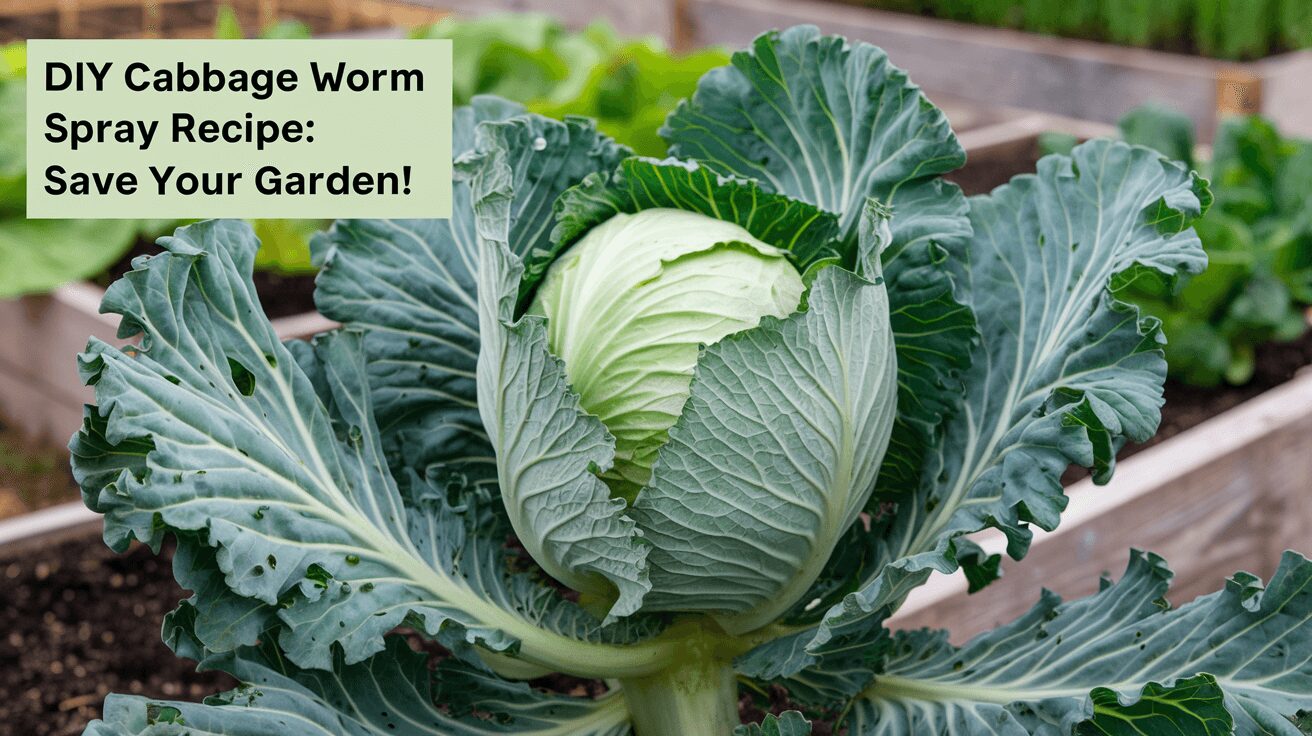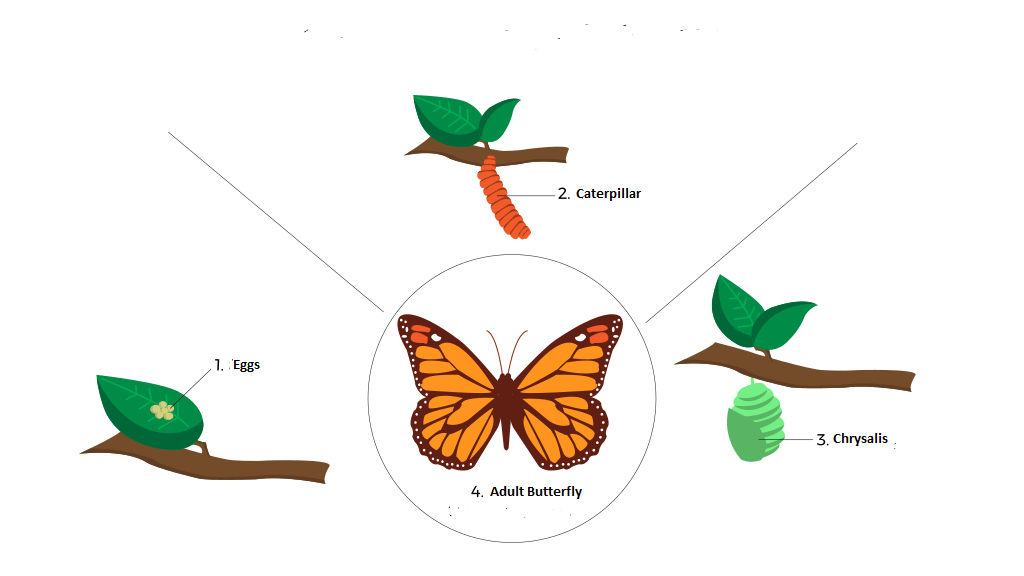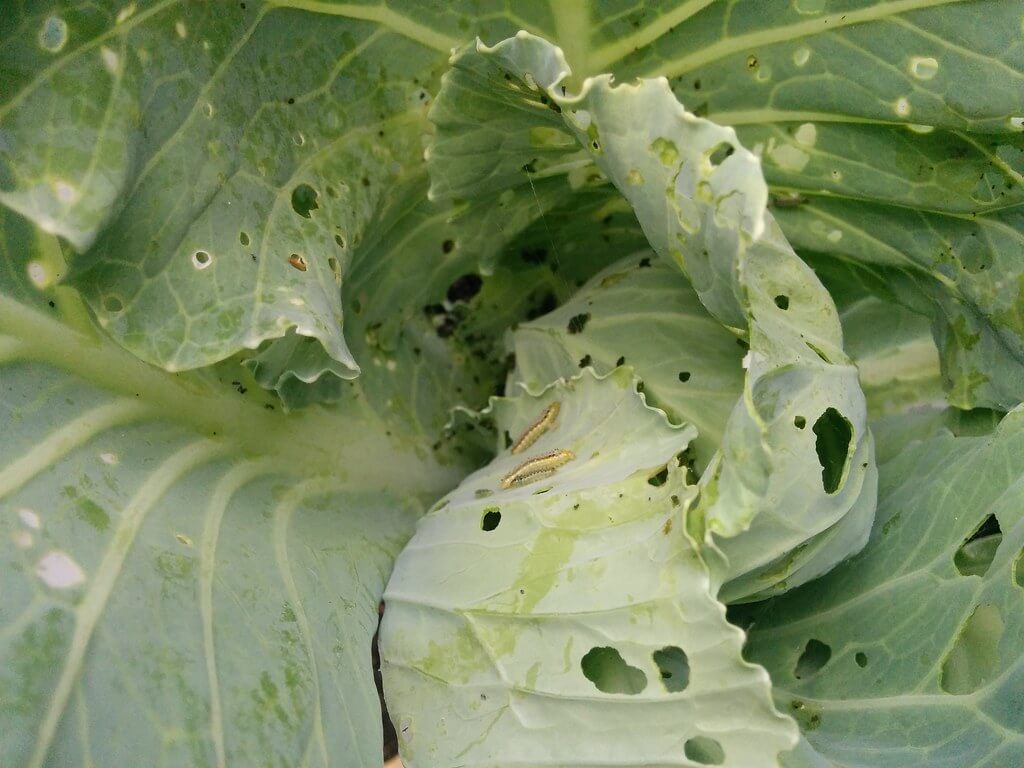The thing about cabbage worms? They’re relentless, and if you don’t tackle them fast, you’ll end up with more damage than you can fix. Trust me, I've learned this the hard way—after losing more cabbages than I'd care to admit.
But don’t worry! I’ve picked up some handy tricks along the way that I wish someone had shared with me earlier. Stick around, and I’ll show you everything you need to know about cabbage worms—from identifying them to getting rid of them, naturally.
What are Cabbage Worms?
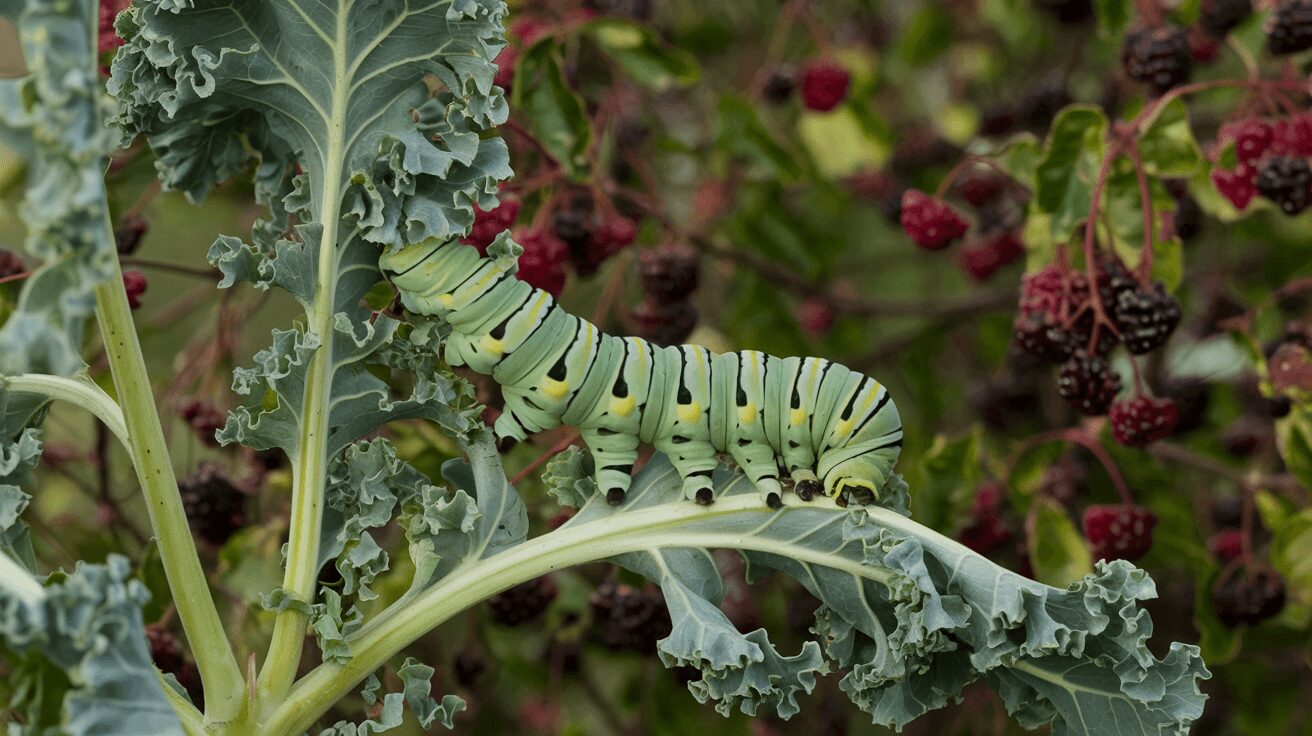
Cabbage worms are essentially the larvae of several butterfly species, most commonly the small white butterfly. You’ve probably seen them fluttering around your garden, looking all innocent—ha, don’t be fooled!
These butterflies lay eggs on your cauliflower, cabbage, arugula, kale and other cruciferous vegetables, and within days, those eggs hatch into the hungry little pests we’re battling today.
They are typically green, blending in perfectly with the leaves, which makes them difficult to spot. I once spent an entire afternoon staring at my cabbage leaves, swearing nothing was there—until I saw one wiggling right in front of me. They’ve got this natural camouflage game on point!
Fun fact: The scientific name for the most common cabbage worm is Pieris rapae, though there are other species, like the cabbage looper and the diamondback moth. But, regardless of their specific type, they all have one thing in common—they love feasting on your crops.
Cabbage Worms Life Cycle
Understanding the life cycle of cabbage worms is key to knowing how to get rid of them. These little critters go through four stages:
- Egg: The female butterfly lays small, white, and round eggs on the underside of leaves (usually cabbage, broccoli, or kale).
- Larva (Caterpillar): This is where the real damage happens! The eggs hatch into green caterpillars that immediately start munching away at your plants. This stage lasts about 2-3 weeks.
- Pupa (Chrysalis): After they’ve eaten their fill, cabbage worms will form a chrysalis and enter the pupal stage, which can last anywhere from a few days to weeks.
- Adult Butterfly: Finally, they emerge as butterflies and start the cycle all over again.
Here’s the kicker—this cycle can happen multiple times in a growing season, so if you don’t catch them early, your garden could be swarmed in no time!
Read Next:
How to Identify Cabbage Worms
You'd think something causing so much destruction would be easy to spot, but these guys are experts at blending in. Here’s what to look for:
- Holes in Leaves: The most obvious sign is ragged holes in the leaves of your plants. Cabbage worms eat from the edges inward, leaving irregular patterns behind.
- Green Caterpillars: Look closely at the underside of leaves. The cabbage worm itself is green with faint yellow stripes down its back.
- Butterflies Flying Around: Those little white butterflies hovering over your garden? Yeah, they're not just pretty to look at. They're laying eggs!
- Dark Green Droppings: I know, not pleasant, but these worms leave behind dark green poop. If you see it on your leaves, you’ve got a problem.
I once thought the holes in my cabbage were from slugs, but nope, cabbage worms had already settled in. A quick lift of the leaves, and there they were, munching away!
Cabbage Worm Damage
Cabbage worms can cause major damage, especially if left unchecked. Here’s how they wreak havoc:
- Leaf Damage: The most immediate impact is holes in the leaves, which reduce the plant’s ability to photosynthesize.
- Stunted Growth: Because cabbage worms munch on the tender parts of the plant, including new growth, they can stunt the development of the entire plant.
- Infection Risk: Damaged plants are more susceptible to diseases and infections. After cabbage worms tore through my kale, I noticed fungal issues creeping in—not fun.
Worse yet, they don’t just stop at cabbage. They’ll go after broccoli, cauliflower, kale, and brussels sprouts too. Basically, they’re out to destroy your entire garden buffet!
How to Get Rid of Cabbage Worms Naturally
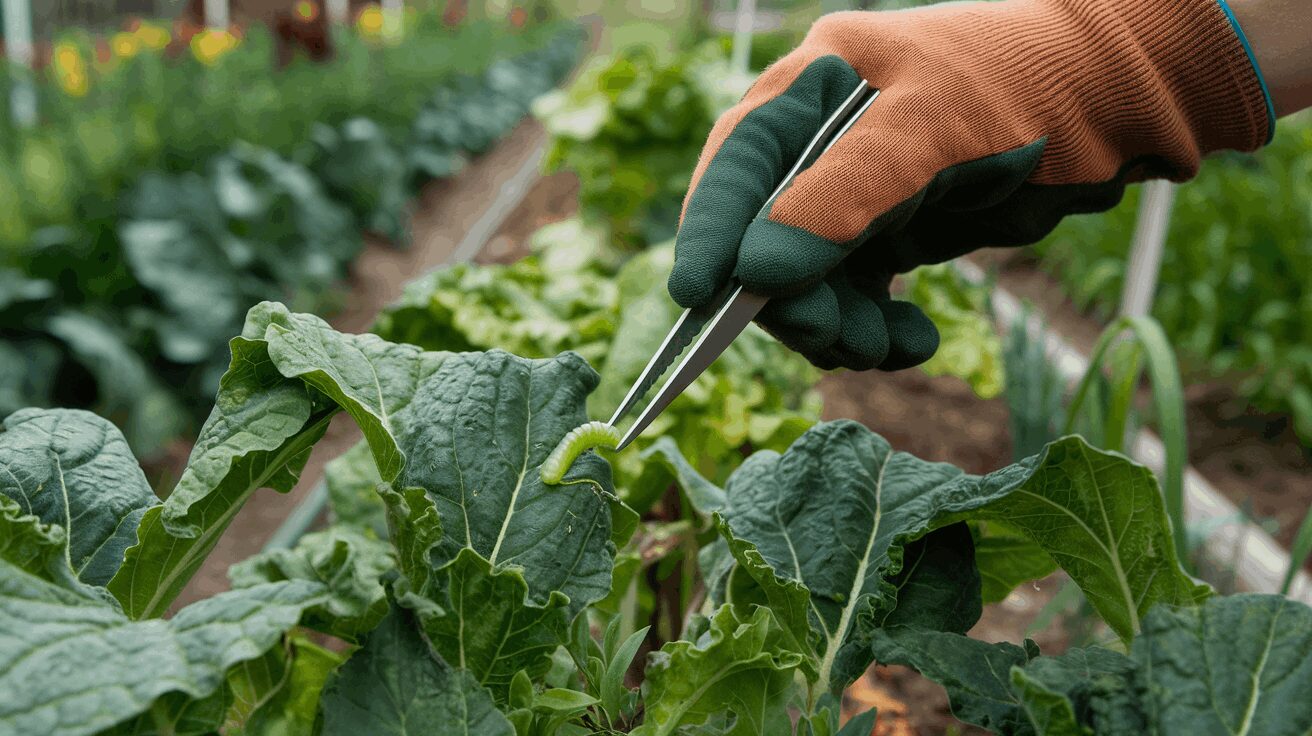
Alright, now let’s get to the good stuff—how to get rid of cabbage worms without dousing your garden in chemicals. Over the years, I’ve tried all sorts of methods, but these are the ones that work best for me:
1. Handpicking
Yep, the old-fashioned way. This is labor-intensive, but it’s effective. Go out in the early morning or late evening and pick the worms off by hand. Toss them into a bucket of soapy water to make sure they don’t come back. I know, it sounds gross, but it’s oddly satisfying once you get into the groove.
2. Neem Oil
Neem oil is a natural insecticide that disrupts the growth and reproduction of cabbage worms. Spray it on the affected plants every week or two. Just be careful not to use it during the heat of the day—learned that the hard way when I ended up burning half my plants!
3. Beneficial Insects
There are insects that actually love to snack on cabbage worms. Introduce garden spiders, parasitic wasps or ladybugs to your garden. These guys will help keep the cabbage worm population in check without any work on your part.
4. Insecticidal Soap
Insecticidal soap is another effective, environmentally-friendly option. It works by breaking down the outer layer of the worms, essentially drying them out.
You can buy this ready-made or make it yourself by mixing 2 tablespoons of dish soap with 1 gallon of water. It’s safe for the plants and won’t harm beneficial insects when used correctly.
Homemade Spray for Cabbage Worms
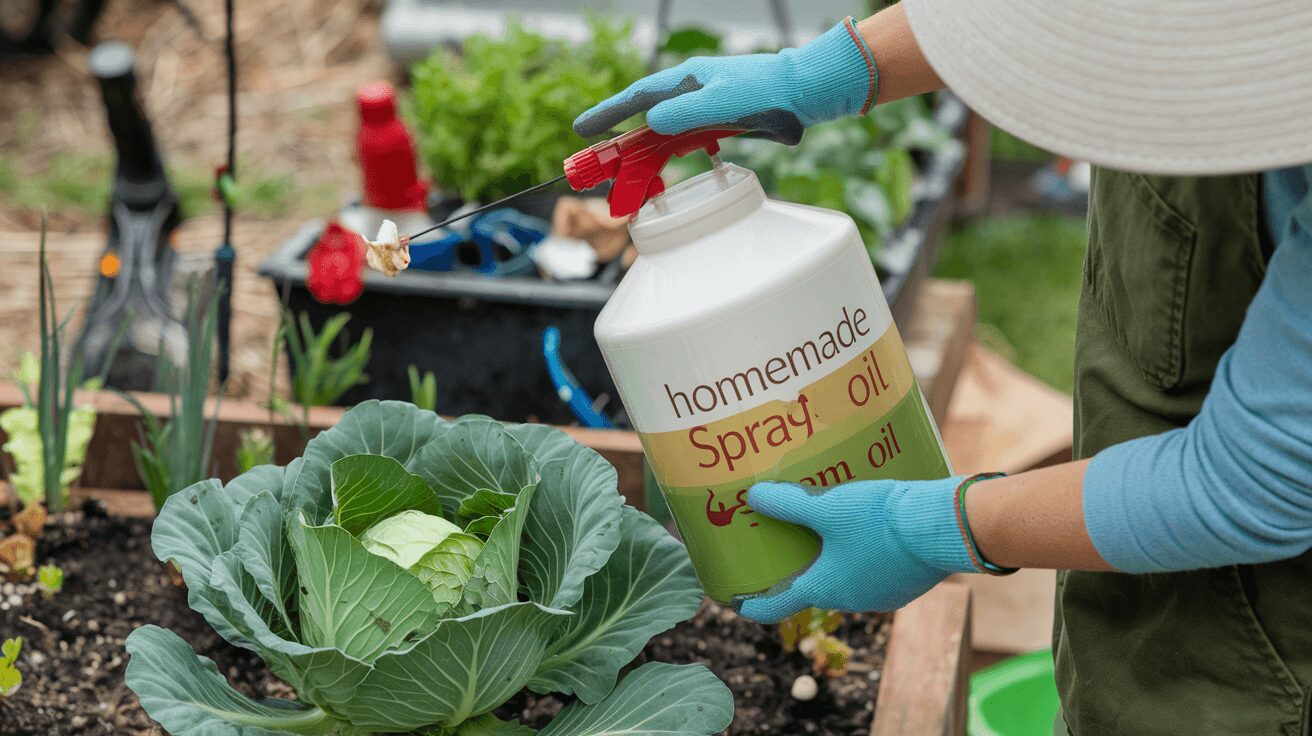
One of the easiest and most cost-effective ways to combat cabbage worms is by whipping up a simple homemade spray. The beauty of this method is that you likely already have most of the ingredients in your kitchen. Here’s how to make it:
Ingredients:
- 2 cups of water
- 1 tablespoon of dish soap (preferably organic or biodegradable)
- 1 tablespoon of neem oil (optional but highly effective)
- 1 teaspoon of cayenne pepper or garlic (optional for an extra kick)
Steps to Make the Spray:
- Mix the water and dish soap together in a spray bottle. Dish soap helps break down the outer layer of the worms, suffocating them.
- Add neem oil to the mix. Neem oil is a natural insecticide that disrupts the feeding patterns of cabbage worms, preventing them from further damaging your plants.
- If you want to take it up a notch, add a teaspoon of cayenne pepper or crushed garlic. Both act as natural repellents and irritants to cabbage worms.
- Shake the bottle well before use to ensure the ingredients are evenly distributed.
Application:
- Spray the solution on your plants, focusing on the undersides of the leaves where cabbage worms tend to hide.
- Reapply the spray every 5-7 days or after heavy rain. Consistency is key to keeping the worms at bay.
- For severe infestations, you can increase the frequency of application to every 3-4 days.
I use this spray regularly during peak growing seasons, and it's been a game-changer. It's safe for the plants and effective against pests, without the harsh chemicals found in store-bought pesticides.
Read Next:
Best Pesticides for Cabbage Worms
If natural methods aren’t enough and you’re dealing with a severe infestation, it might be time to consider using a pesticide. But I’m not talking about those harsh chemical-laden options. There are organic pesticides that are both effective and safe for your garden.
1. Bacillus Thuringiensis (Bt)
This is a naturally occurring soil bacterium that is deadly to cabbage worms but safe for plants, humans, and beneficial insects.
Bt targets the digestive system of the worms, causing them to stop eating and eventually die. I’ve found it especially helpful during heavy infestations. It’s easy to use—just mix it with water and spray it on the plants. Repeat every 7-10 days for consistent protection.
2. Spinosad
Another organic option is spinosad, a natural substance made by a soil bacterium. Like Bt, it affects the nervous system of the cabbage worms and other caterpillars, causing paralysis and death. It works quickly and breaks down fast in the environment, which is a plus. I’ve had good results with spinosad on both my cabbages and kale.
Make sure to follow the instructions on these pesticides carefully and avoid overuse. While they’re safer than chemical alternatives, using too much can still affect the balance of your garden ecosystem.
Prevent Cabbage Worms
Preventing cabbage worms from invading your garden in the first place is always the best strategy. Over the years, I've learned a few reliable methods that keep those pesky worms from even getting near my cabbage and other cruciferous plants.
1. Companion Planting
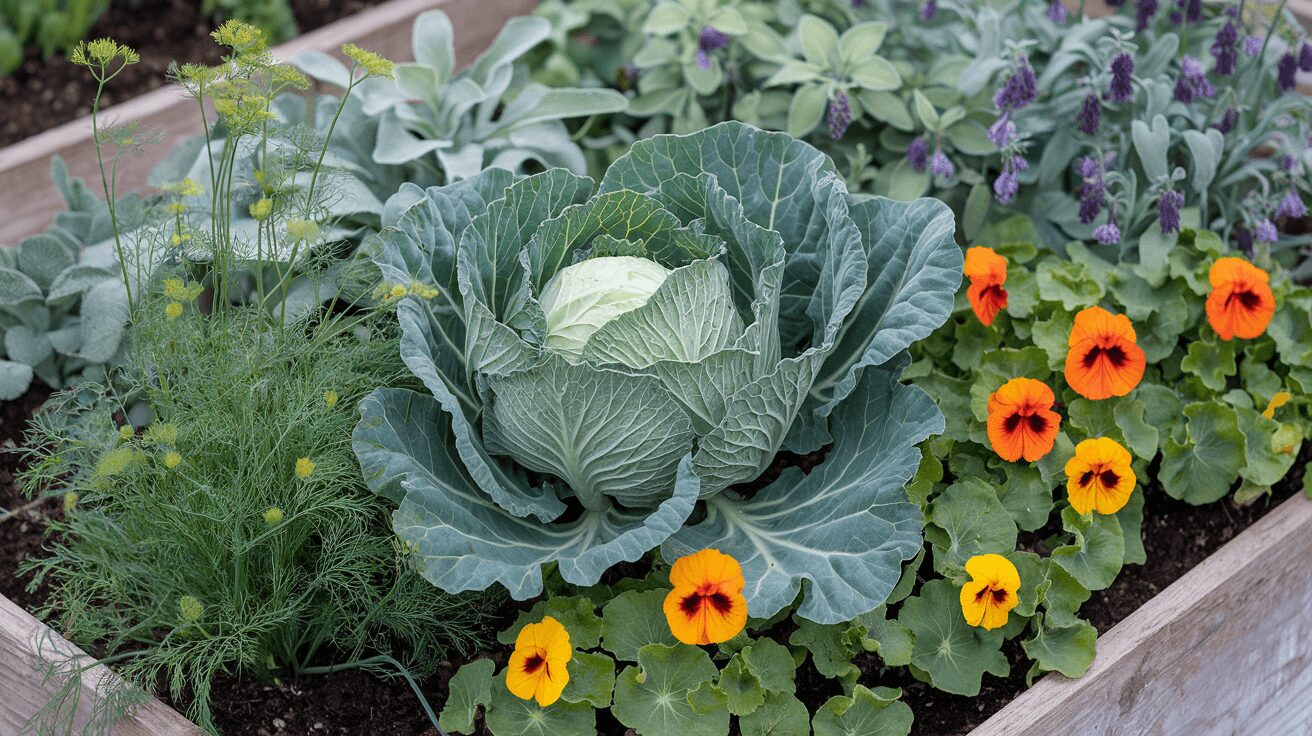
This is a lifesaver. Plant strong-smelling herbs like sage, thyme, dill, and mint near your cabbage, kale, and broccoli. These herbs act as natural repellents, making your garden less inviting to cabbage worms. Personally, I plant dill every season—it works wonders!
2. Use Floating Row Covers
A floating row cover is like a breathable fabric you drape over your plants. It prevents butterflies from laying their eggs on the leaves.
The key here is to secure the edges so no sneaky bugs can crawl under the cover. I start using row covers as soon as I plant my seedlings and keep them in place until harvest. Just make sure you leave room for the plants to grow.
3. Rotate Crops
Pests like cabbage worms tend to return to the same area year after year if you plant the same crops. Rotate your cabbage and other cruciferous veggies to different parts of the garden each season.
This simple practice interrupts the pests’ life cycle and keeps infestations at bay. I usually keep a garden journal to track where each crop was planted—it’s a helpful habit.
4. Keep Your Garden Clean
At the end of each growing season, make sure to clear away any plant debris and fallen leaves. Cabbage worms love to overwinter in garden mess, and if you leave it behind, you’re basically rolling out the welcome mat for them next season. I've made it a rule to clean up right after the last harvest—no exceptions!
Conclusion
Cabbage worms can be a real pain, but with a little vigilance and the right strategies, you can keep your garden safe. From handpicking to neem oil sprays, there are plenty of ways to combat these pests naturally. And trust me, it’s so worth it when you can enjoy your cabbage patch in peace!
If you’ve ever dealt with cabbage worms, share your experiences in the comments! Maybe you’ve got a secret trick I haven’t tried yet—I'm always up for learning more ways to fight these pesky critters.
External Resources: For more tips on cabbage worms, check out Almanac, and for more gardening tips, check The Spruce
FAQ
Are cabbage worms harmful?
Yes, they are harmful to your plants, especially cruciferous vegetables like cabbage, kale, and broccoli. They feed on the leaves, creating holes and stunting the growth of the plant. Left unchecked, cabbage worms can cause significant damage and may even kill the plant.
What is the difference between a cabbage worm and a cabbage looper?
The main difference between a cabbage worm and a cabbage looper is their movement. Cabbage worms move in a straight line, while cabbage loopers arch their bodies into a loop shape as they move. Additionally, cabbage worms are the larvae of small white butterflies, while cabbage loopers come from moths.
What are the symptoms of cabbage worm?
The most noticeable symptoms of cabbage worm infestation are irregular holes in the leaves, green droppings on the plants, and stunted growth. You may also see green caterpillars hiding under the leaves or butterflies hovering near your plants.
Do cabbage worms turn into butterflies?
Yes, cabbage worms are the larvae of the small white butterfly (Pieris rapae). Once they’ve fed enough on your plants, they form a chrysalis and eventually emerge as butterflies, starting the life cycle all over again.
Where do cabbage worms come from?
They come from eggs laid by the small white butterfly. These butterflies are common garden visitors, and they lay their eggs on the underside of leaves, particularly on cruciferous vegetables like cabbage, kale, and broccoli.
What do cabbage worms eat?
They feed primarily on the leaves of cruciferous vegetables, including cabbage, kale, broccoli, cauliflower, and brussels sprouts. They munch on the tender parts of the leaves, often leaving ragged holes and causing significant plant damage if not controlled.

